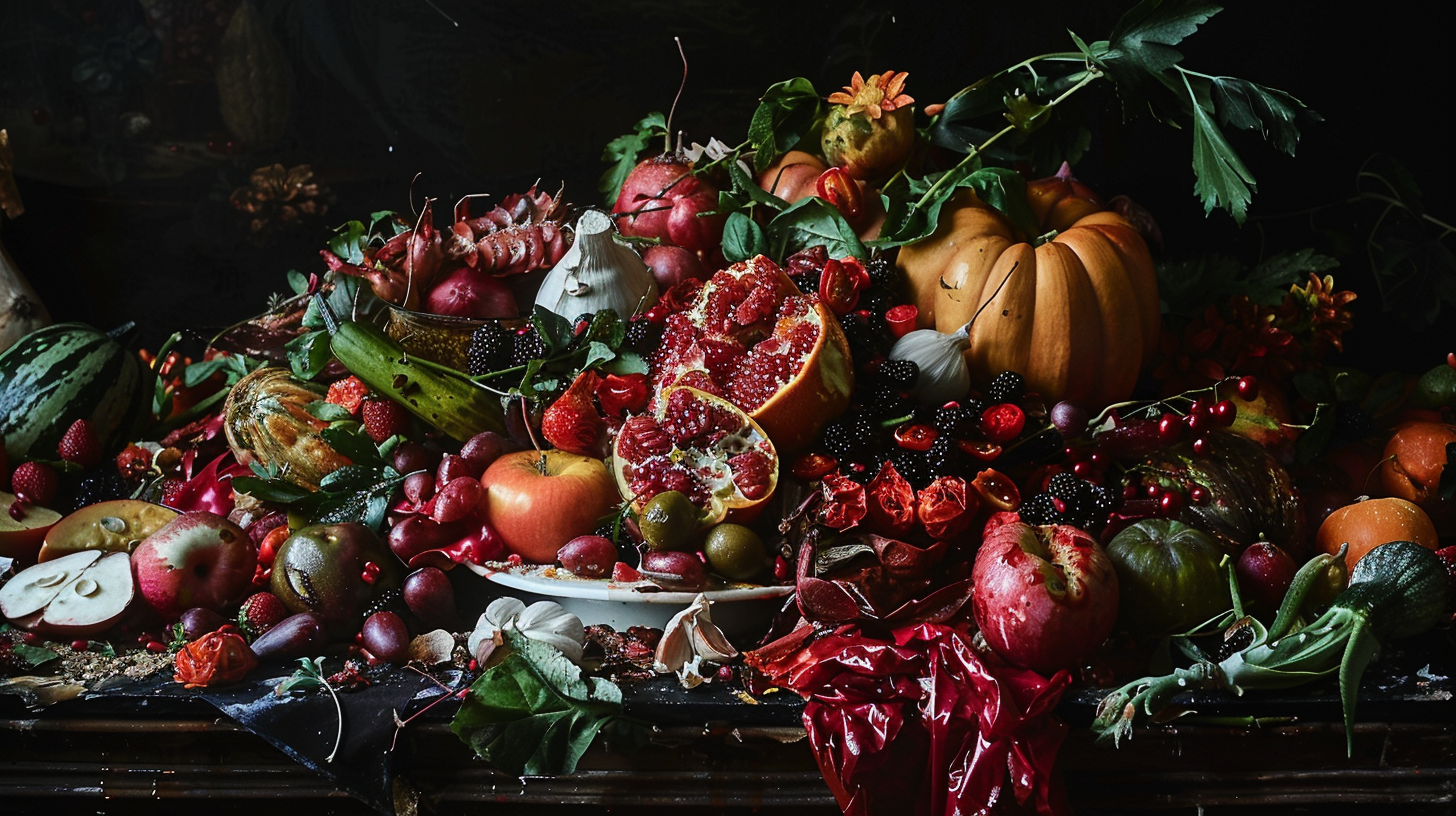Contents
- What is Food Decay Photography About?
- Historical Context and Evolution of the Genre
- Seeing the Charm in Food’s Flaws
- Color and Texture: The Visual Elements of Decay
- How to Take Captivating Decay Photographs
- Decay as a Symbol of Time Passing By
- Snapping Crisp Decay Photography
- Simple Lighting Tricks for Better Decay Photos
- Setting Up and Getting Food Ready for Decay Pictures
- Notable Food Decay Photographers and Their Contributions
- Putting Together a Food Decay Photo Book
What is Food Decay Photography About?
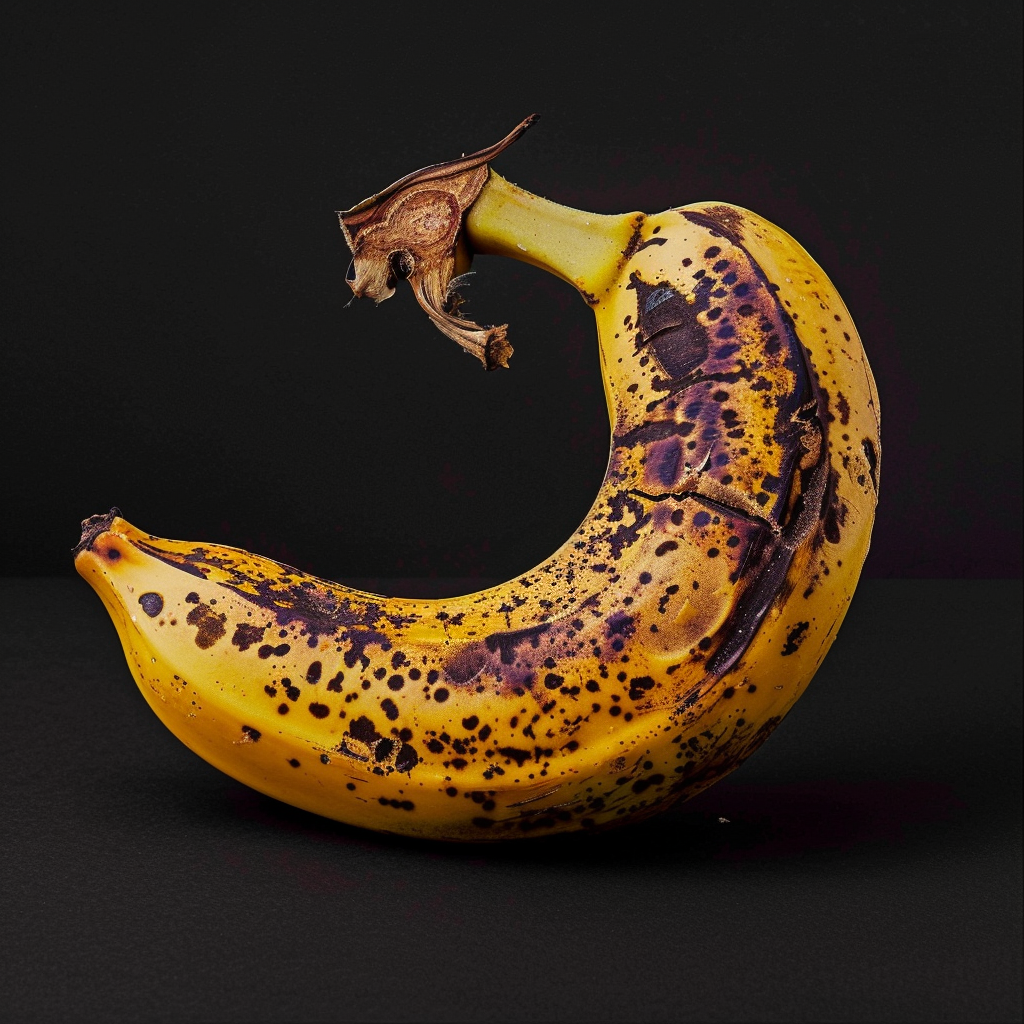
This type of photography captures food as it goes bad. It covers everything from taking photos for science to making eye-catching art. It shows us the surprising beauty in rotting food, with all the different textures, colors, and designs that pop up when food gets old. Some photographers might focus on only snapping pics of rotting fruits and veggies, but others will take shots of all kinds of food that’s going off.
Historical Context and Evolution of the Genre
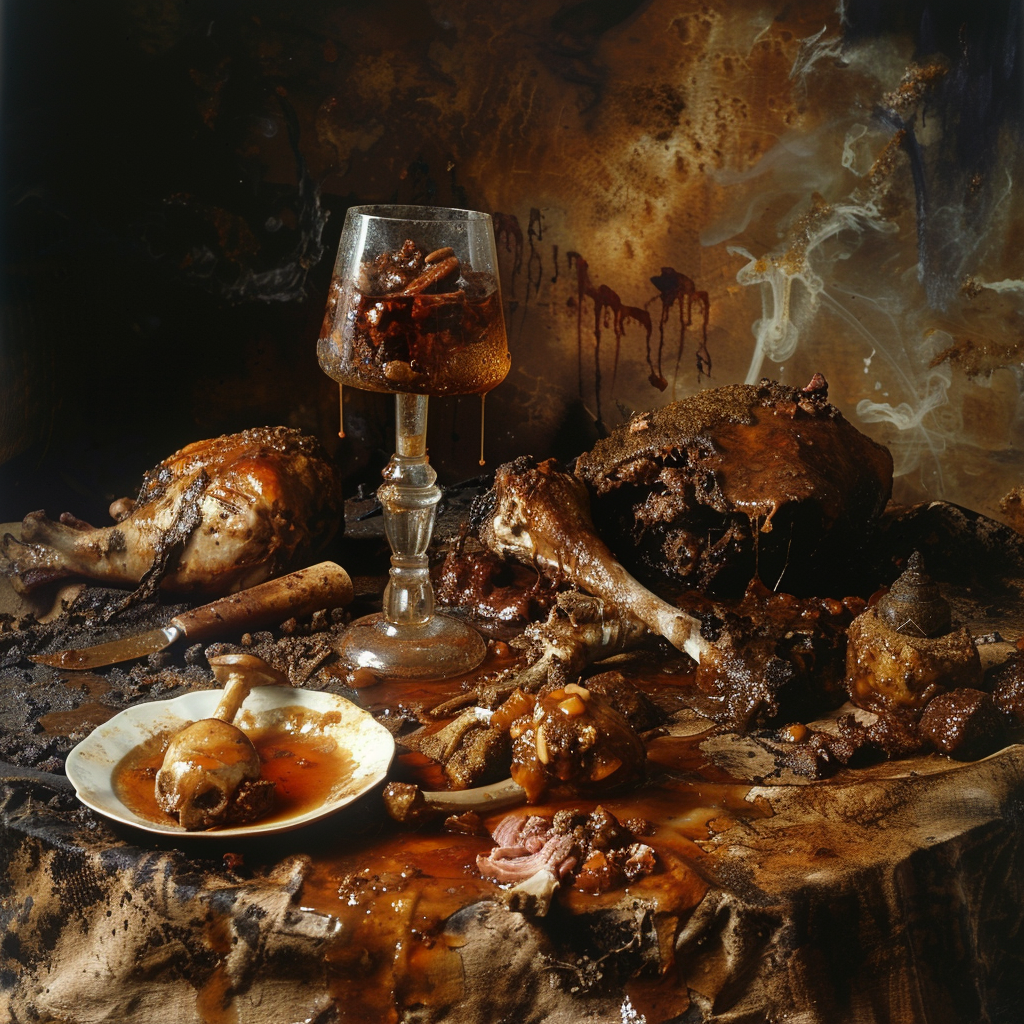
The back story of photos featuring rotting food is not well-documented, but it started with still-life art. For a long time, artists have found the way food spoils interesting. When photography came along and advanced, it also started to capture this process. These days, thanks to high-tech gear, we can zoom in on tiny shifts in food as it turns. Plus, this style’s gotten popular alongside trends that value life’s fleeting and flawed sides.
Seeing the Charm in Food’s Flaws
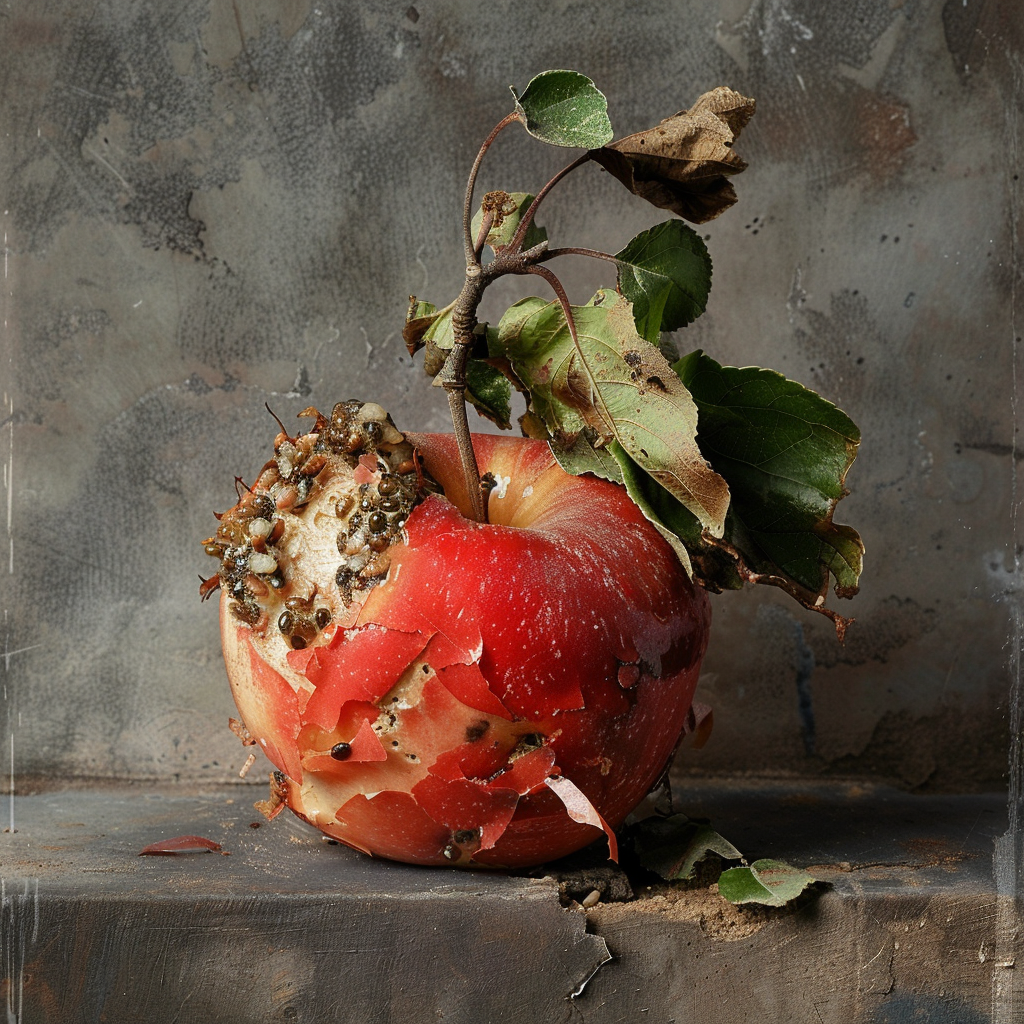
Capturing the imperfect sides of food can be an artistic mission. Photographers interested in food decay don’t just go for fresh and spotless subjects; they find beauty in what’s spoiling and drying up. The blemishes like fruit bruises, wilting veggies, or moldy bread, which most might find ugly, are actually treasures for these artists. Showing these imperfections, photographers reveal beauty isn’t just about being perfect.
Color and Texture: The Visual Elements of Decay
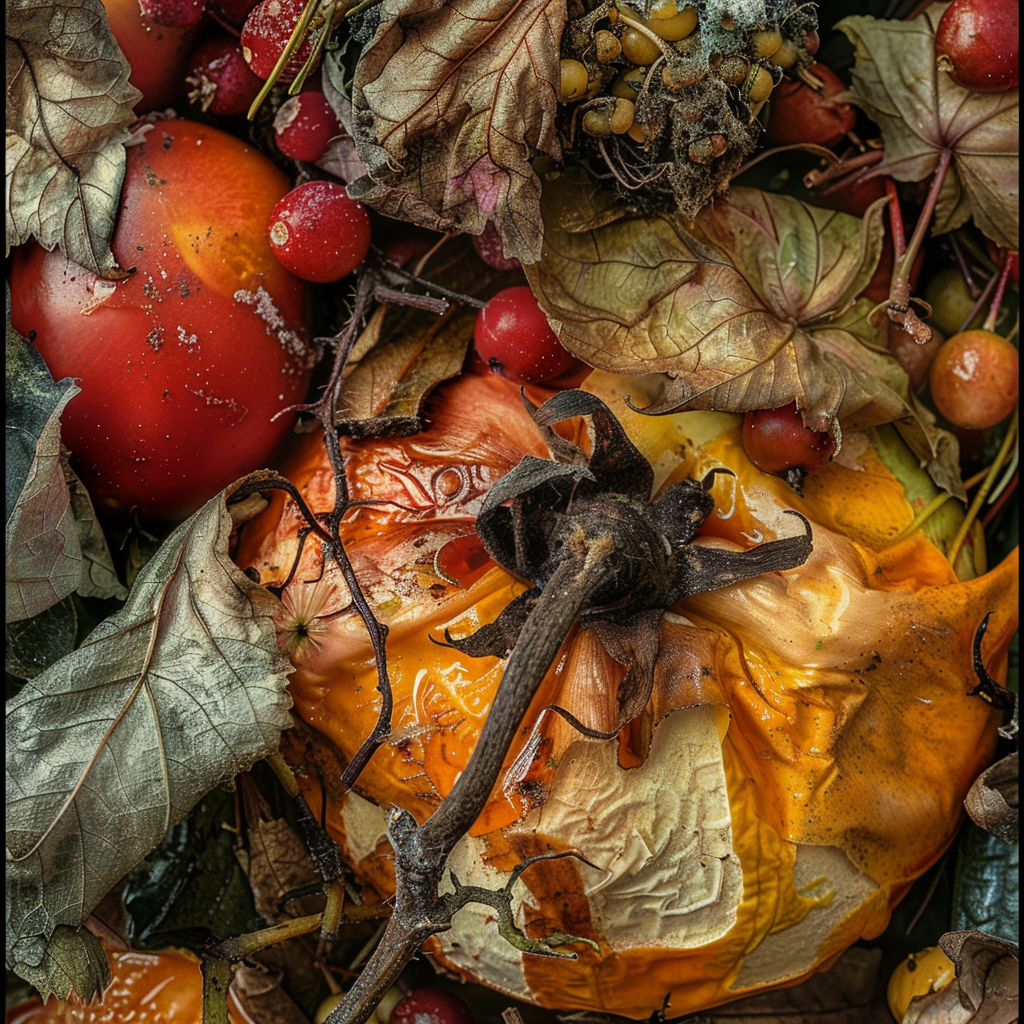
Decay brings out a variety of colors and textures that are surprisingly bright and vivid when you stop to look at them, like when food goes bad, it can change in some cool ways. You might see colorful molds popping up on some old cheese or a piece of fruit might get all wrinkly and look totally different. These mixes of colors and bumpy or smooth parts make each rotting thing unique and give it a lot of personality. That’s why taking pictures of stuff that’s decaying is really interesting—there’s so much to see and think about!
How to Take Captivating Decay Photographs
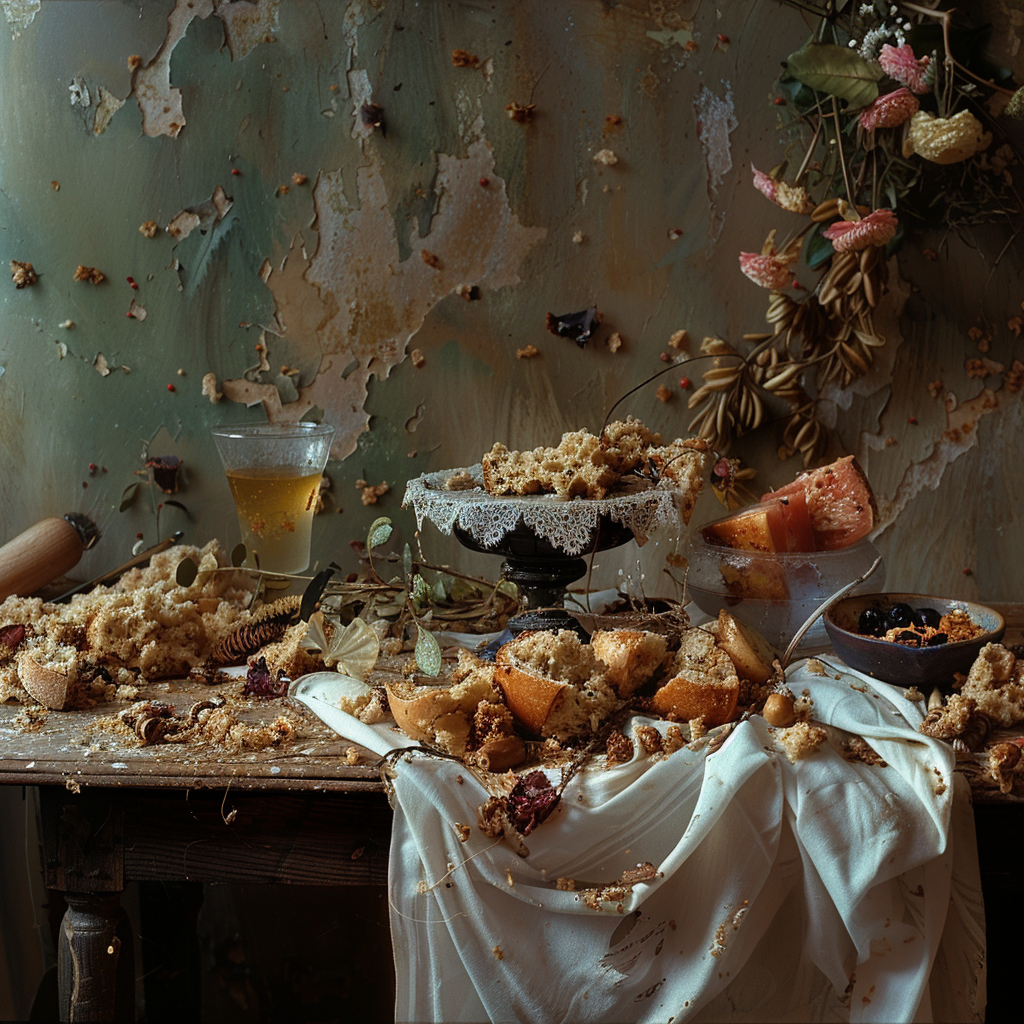
Capturing great decay photography is all about good composition. Let’s explore how to grab attention and stir the imagination.
Put the Rule of Thirds into practice: Aim for a little off-center when placing subjects to give your photo a mix of order and excitement.
Use light and shadow to your advantage: Strong contrasts can really bring out textures.
Make lines and patterns work for you: Arrange your photo so that these elements guide people’s gaze.
By zeroing in on these strategies, a photographer can produce a picture that grabs interest and sticks in the mind. Despite decay being a disorderly subject, a neatly framed shot can paint a picture and touch someone’s feelings.
Decay as a Symbol of Time Passing By
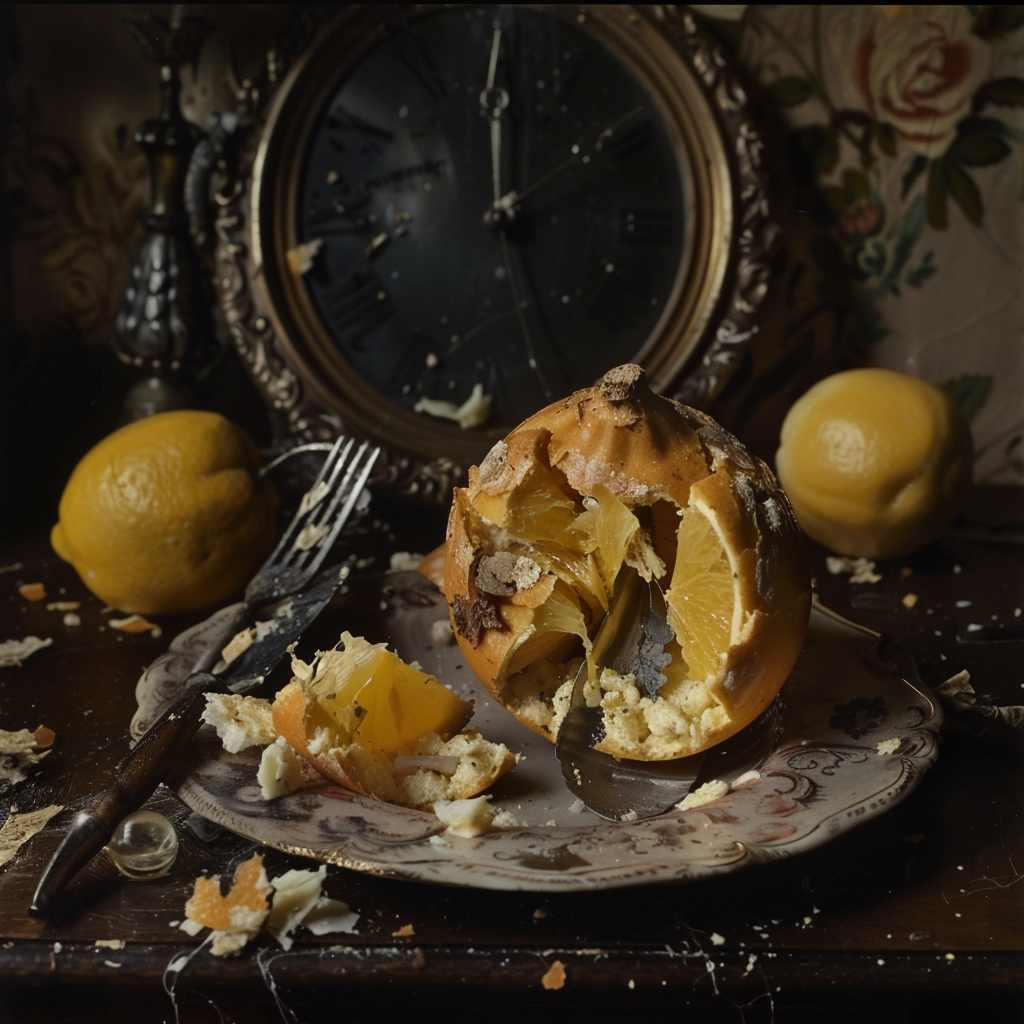
Photos that show decay remind us that time always moves forward. These photos show things like food going bad, which is just what happens naturally. It’s just like how we all get older. These pictures really make you realize how short life is and that time doesn’t stop for anyone.
The Meaning of Decay in Art
In art, especially in still lifes, decay has been used to talk about death and how nothing lasts forever. Different cultures have used this to make people think about how temporary life is. It’s a way for people to think about the deeper questions of existence.
Looking at Overeating and Waste
Today’s food photos that show rotting are not just about decay but also our big problems with using too much and wasting lots. With all the concerns about keeping our planet healthy, these images are a sharp wake-up call. They show what happens when we have too much stuff and don’t care about limits. So, they make us think about how we affect the environment and why we need to do something different.
Snapping Crisp Decay Photography
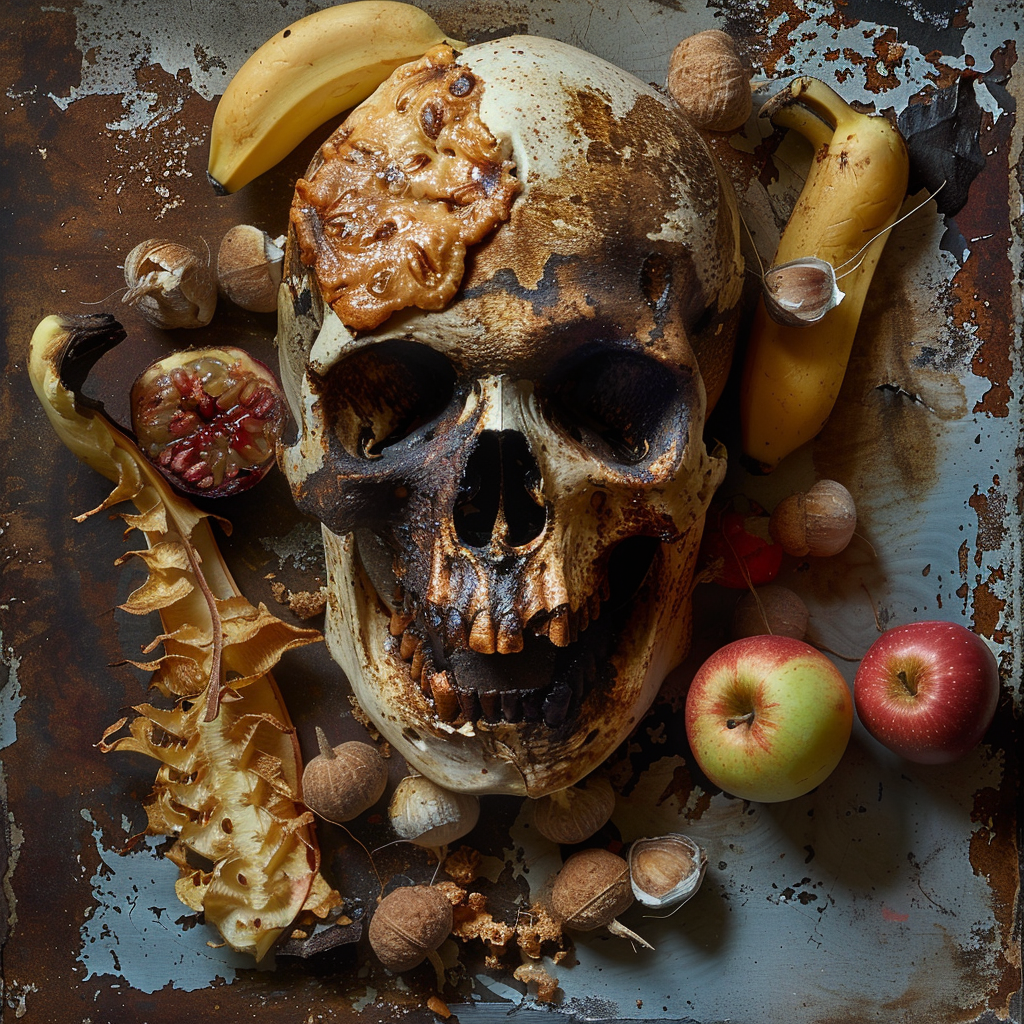
Capturing the fine intricacies of rotting food demands correct camera settings. A high-res camera is ideal, capturing the subtle shades and textures of decay. Macro lenses are the top choice for detailed shots since they excel in magnifying minute details.
You’ll want to set a tight aperture (a higher f-stop number) to make sure most of your subject is crisp. This is key when shooting, say, the fluff of mold or dried-out fruit wrinkles. Keep your ISO low to avoid noisy pictures, but you might need to tweak it depending on the light. Because a tight aperture lets in less light, you might need a slower shutter speed. Using a tripod can help prevent blur from any movement.
Simple Lighting Tricks for Better Decay Photos
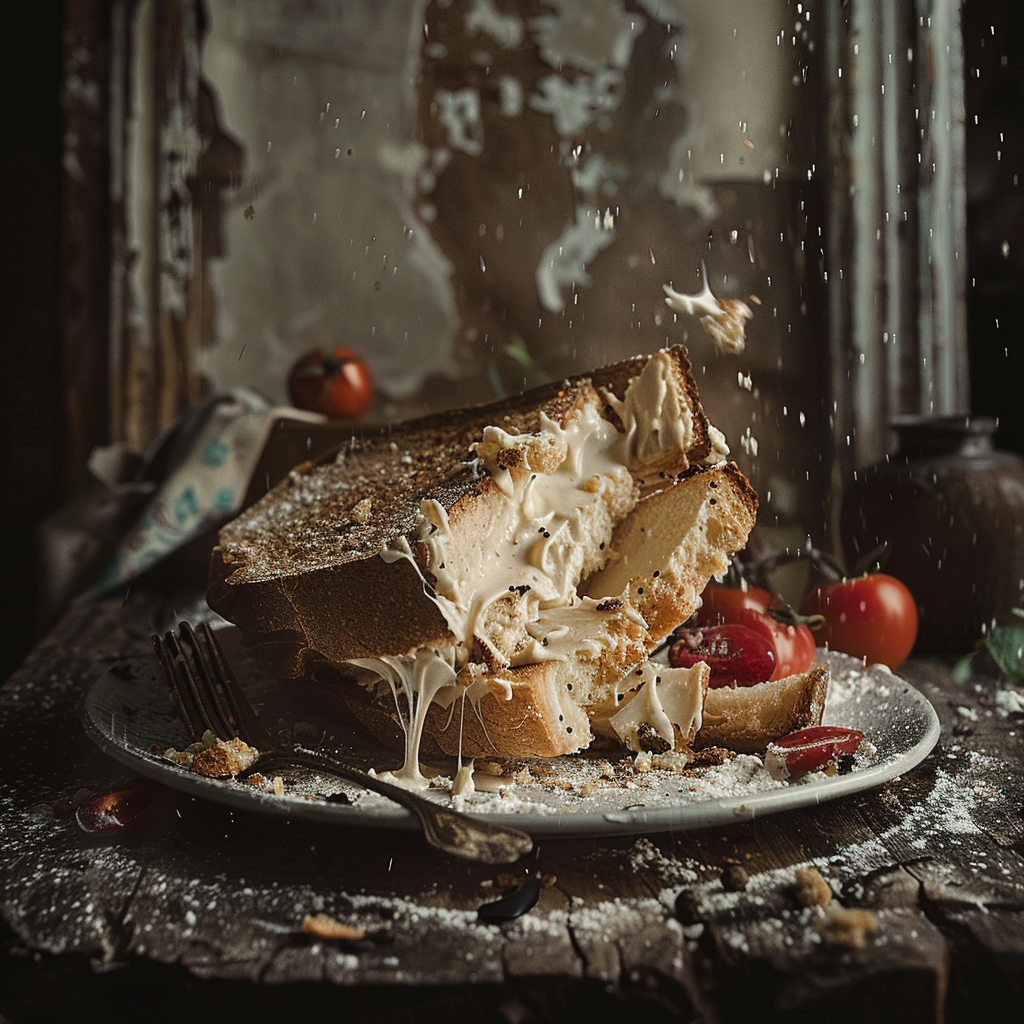
Lighting is crucial in photography, especially when capturing the detail in decay. It can bring out the depth and texture of an image, and even control the atmosphere. Using light from the side highlights textures by throwing shadows into folds and gaps on decomposing organic items like fruit or veggies. On the other hand, backlight makes semi-transparent areas glow when it passes through thin patches of decay. You should use light that’s softened, not direct because it looks gentler and produces photos that seem more real.
Setting Up and Getting Food Ready for Decay Pictures
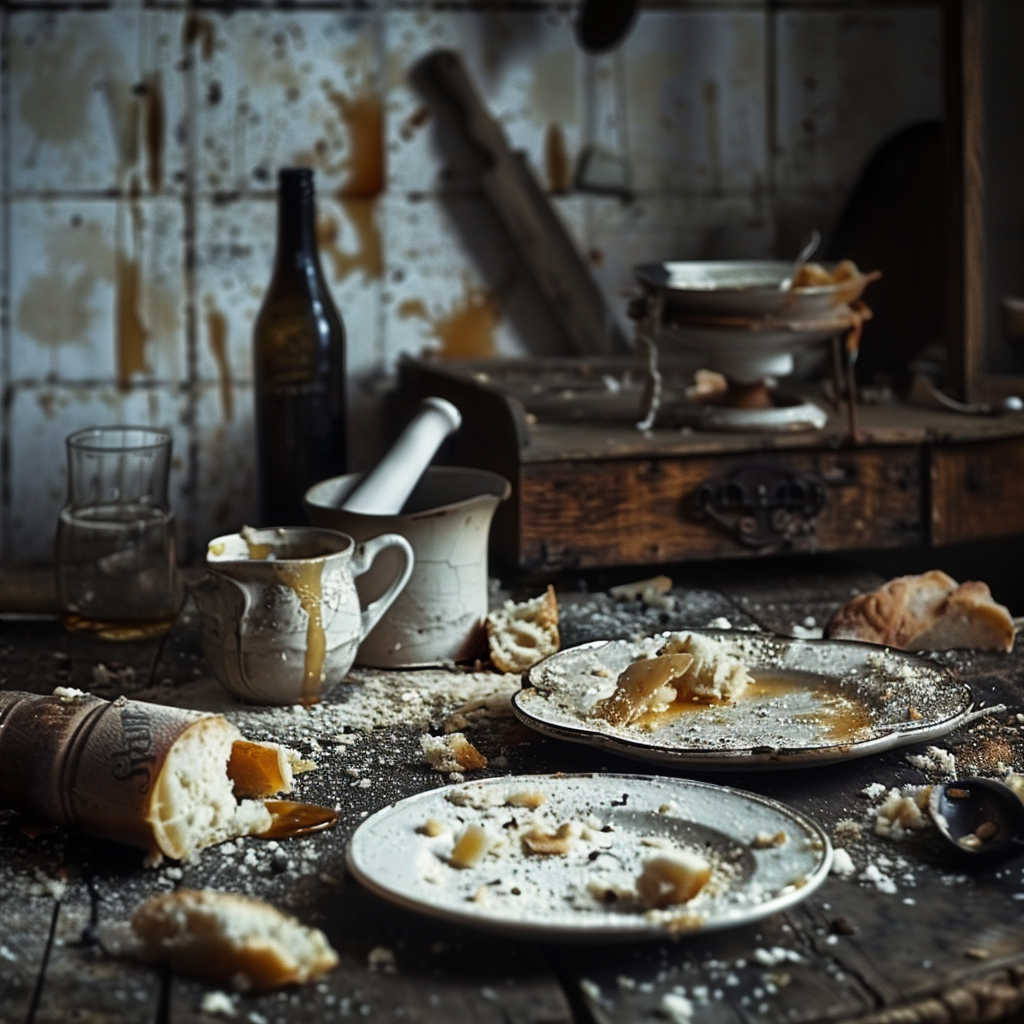
Before you take photos, it’s essential to arrange and prep your rotting food. Some photographers dive right in and document the food spoiling over time. Find a spot where the decay can happen safely without being disturbed or causing danger. And since mold and bacteria will show up, be careful not to spread them to other food or areas.
Wearing gloves can be useful when you touch the subject while photographing, for cleaniness and to stop fingerprint marks. Put your subject on a plain background, which keeps the focus on the details of the decay. Before you snap a shot, look at your subject from different sides and placements. This helps show off the flaws and unique traits best.
Remember, these pictures aren’t just about something gross – they’re about spotting beauty where you don’t usually look for it. Relax, watch the little things, and let the art of rot be part of your work.
Photographing rotting food is more than making things look cool; it also brings up important issues we need to think about carefully. Taking pics of spoiled food can reflect on life and waste, but it should be done thoughtfully. Don’t make light of serious problems like hunger and wasting food across the world.
Using Art to Talk About Wasting Food
When photographing wasted food, you have to balance between making powerful art and showing respect for an important worldwide issue. Photographers can approach it like this:
- Focusing on Learning: Use decay photos to teach people how serious wasting food is, instead of just aiming to shock them.
- Pushing for Change: Connect your images with tips on how everyday people can cut down on their own food waste.
- Being Aware of the Situation: Be mindful of the potential uses for the food that instead is left to go bad.
The Line Between Art and Wrongly Using Resources
There’s a fine line between taking artworthy shots of decaying food and wrongly using a resource that’s in short supply for many. Photographers must think carefully about their place on this scale. To stay on the right side of things:
- Be modest and considerate about what you’re capturing and what it means in reality.
- Think about working with organisations that save food to raise awareness and money through your art project.
- Avoid making poverty or hunger look appealing or dramatic while presenting rotting food in your art.
In closing, while photographers are welcome to investigate themes of decay, doing it within a moral framework makes sure their art helps society talk about use and keeping things going.
Notable Food Decay Photographers and Their Contributions
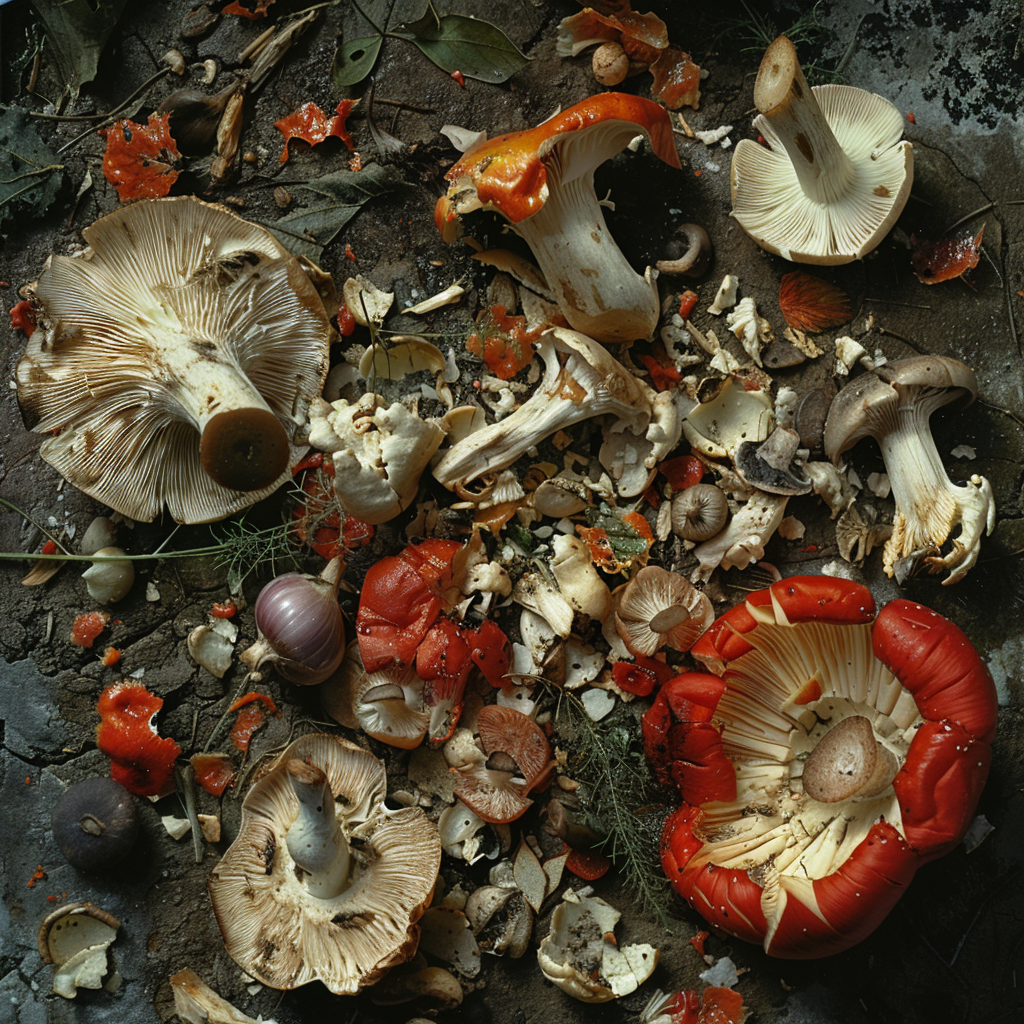
Different photographers have really made their mark on food decay photography. They each bring their own style that shows the beauty in old, breaking down food. These artists aren’t just making pretty pictures—they’re getting us to think about how much food we throw away, and remind us how everything, including time, keeps moving on.
Profiles of Leading Figures in Food Decay Photography
Take Klaus Pichler for instance, he’s known for his series “One Third.” His photos make you really think about how the food we waste links up to our own choices. Then there’s Heikki Leis who’s super detailed with his “Afterlife” series—he captures every tiny bit of fruits and veggies as they rot away.
Analysis of Influential Works in Food Decay Artistry
The best of this kind of art is more than just a photo; these snap shots tell big stories. Like Pichler’s half-rotten peach—it’s beautiful in a weird, fading way and makes you think about life itself. Leis does this too, his up-close pictures might gross you out initially, but then you start to see something amazing in them. They lead us into deep thoughts about how we deal with food and Mother Nature.
Now, photographing old food is kinda fascinating. It’s all about capturing moments before they’re gone forever. When a photographer finishes shooting, editing the pic is super important—it can really change the story the photo tells. You can sharpen things up or make the colors stand out more.
Editing techniques to highlight decay features
A good edit can really show off the details, like textures and colors, which tell their own stories. Photographers might:
- Pump up the contrast to show the difference between the fresh and rotten bits.
- Tweak the colors to show off those spoilage signs—greens of mold or browns when stuff’s going bad.
- Use sharpening tools to really show those natural cracks and creases that come when things start to fall apart.
However, too much editing can ruin it, making it look fake. The trick is using just enough editing magic to make the natural breakdown stand out.
Balancing authenticity with artistic expression
Editing is definitely an art form, but keeping things real is just as important. Photographers have to get this balance right:
- They use enough effects to add to the image without covering up what they actually caught on camera.
- While showing off all that messy decay, they might softly blur the background so your eyes go straight to the main event.
In short, editing in this field isn’t just about slapping on some filters; it’s about using light and shadow to highlight life’s short-lived nature.
When it comes time to show these decay photos in galleries or online, picking the right shots is pretty crucial. The aim is to kick-start conversations on our habits, wasting stuff, and how nothing lasts forever. Each photo has to be chosen for its story and how it grabs your attention.
Curators often mix science with art to pull in lots of different people. Plus, they’ve got to nail the exhibition setup—things like lighting, how much space there is between pictures, and what it all feels like together are really important for folks to get the most out of each photo.
Curating Decay Photography for Galleries and Online Platforms
Aside from picking top-notch images, those setting up the shows also gotta consider presentation style—are frames the way to go or something more out-there? And now with online galleries being so big, making high-quality digital versions of the pics is key. Accessibility matters—they want anyone and everyone to see these images, so they often turn to social media and digital marketing tricks to spread the word wide.
Putting Together a Food Decay Photo Book
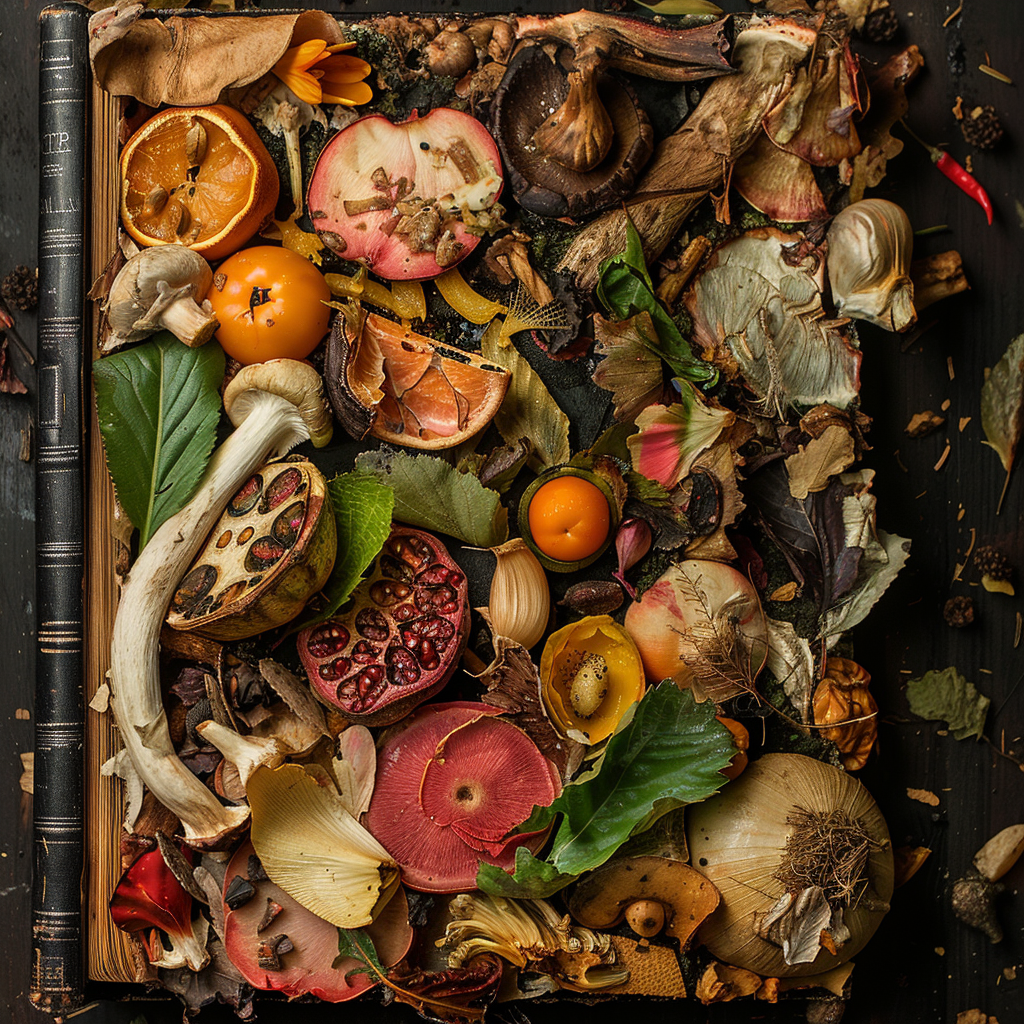
Publishing a food decay photography book involves a lot of important choices. You have to think about how the book feels and looks; these decisions affect the way people read and enjoy it. Picking good quality paper and printing can really make the photos pop. In the book, adding titles and descriptions helps readers understand and engage more deeply with the pictures.
Selecting Photos for Your Book
Publishers have to carefully plan out the book’s photo sequence. They want to create a journey for the reader that makes sense but also gets them thinking. They might place large images on one page and smaller ones on another or even use blank pages to give readers space to think. Often, these books come with essays or introductions by food professionals, art reviewers, or the photographers themselves, giving different insights into why these images matter.
No matter if it’s showing off the work in a gallery or putting together a book, those in charge weigh up lots of technical and creative options. They aim to do more than just show snapshots; they’re creating an experience that teaches and excites people.
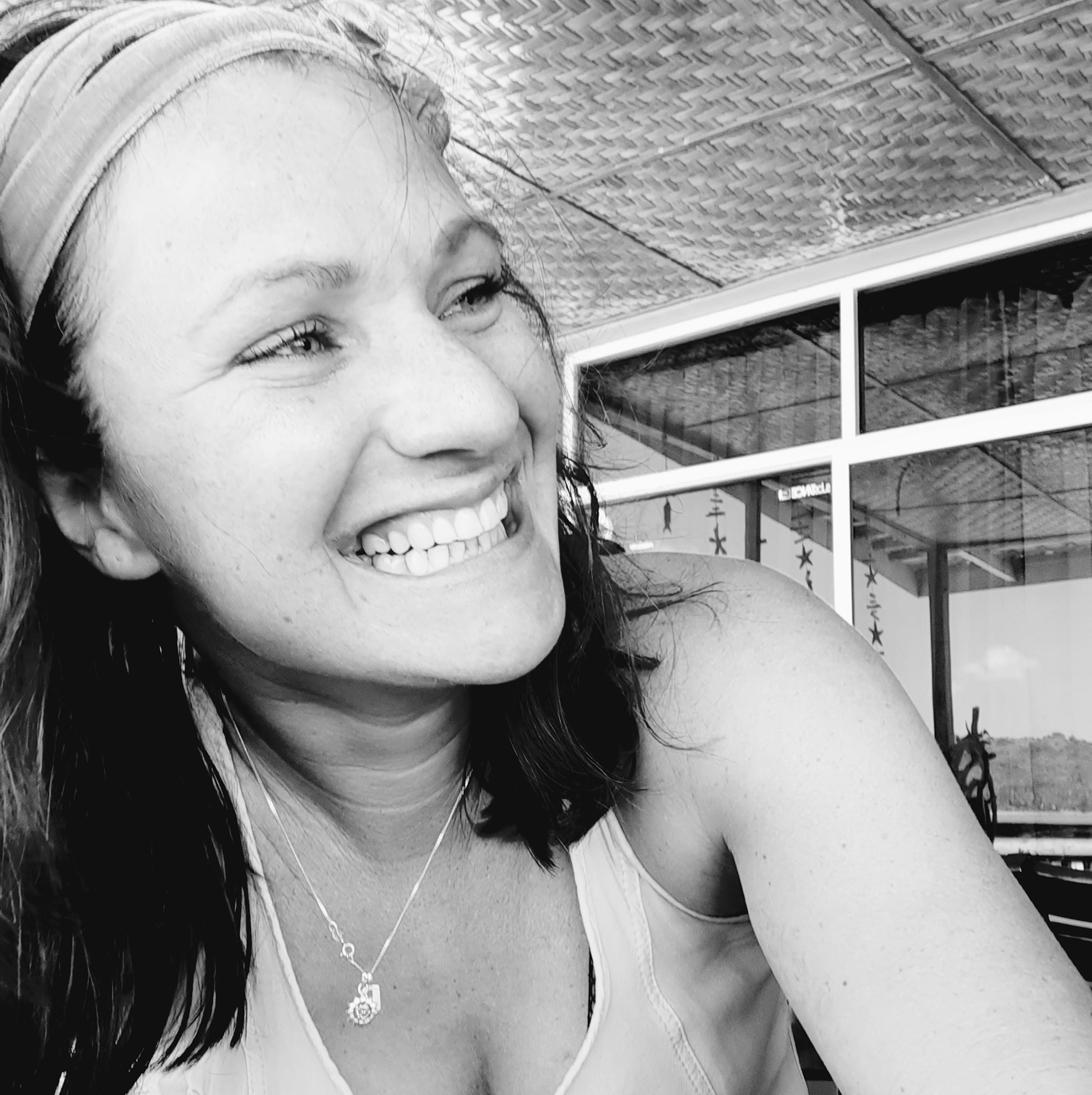
About Author
Rachel Noël is a professional photographer and videographer from the UK with over 10+ years of experience. Rachel specializes in Underwater, Tavel & Portrait photography among other areas.
